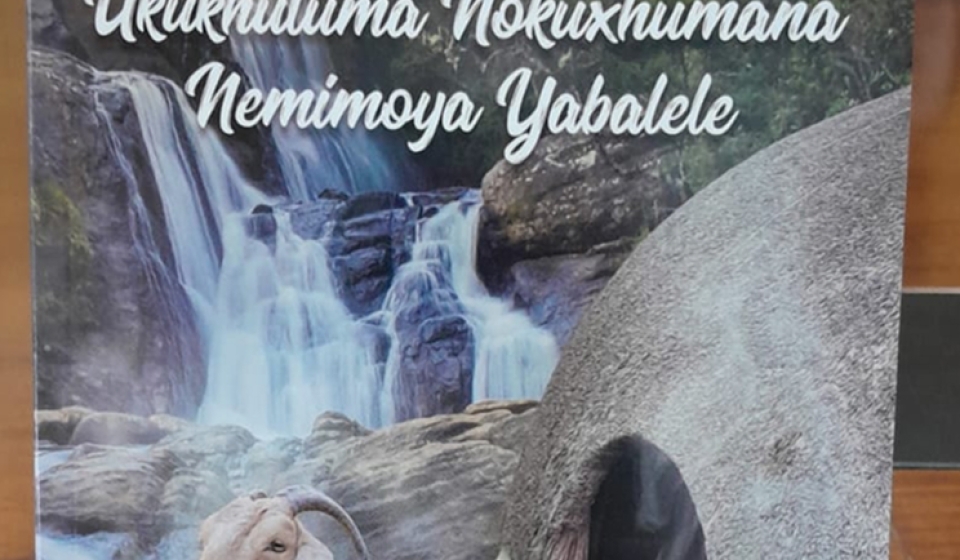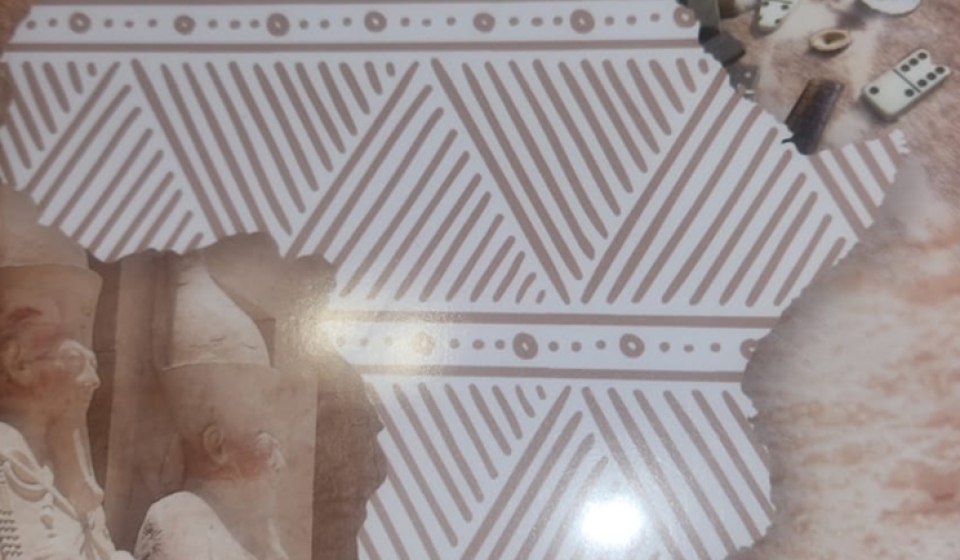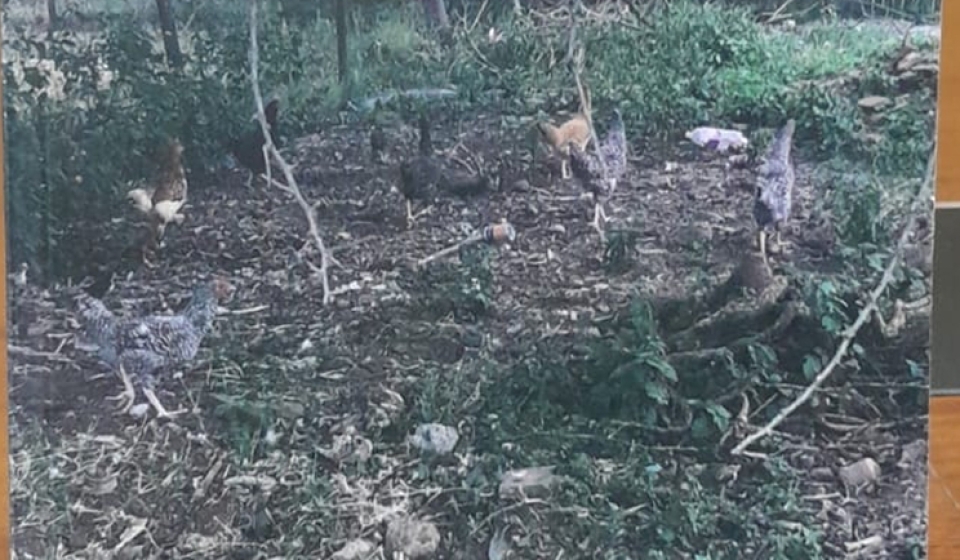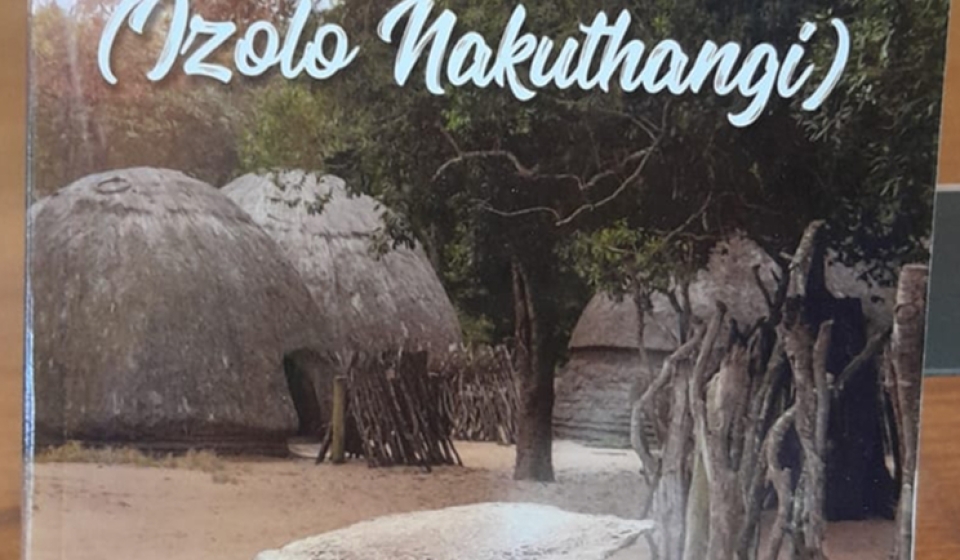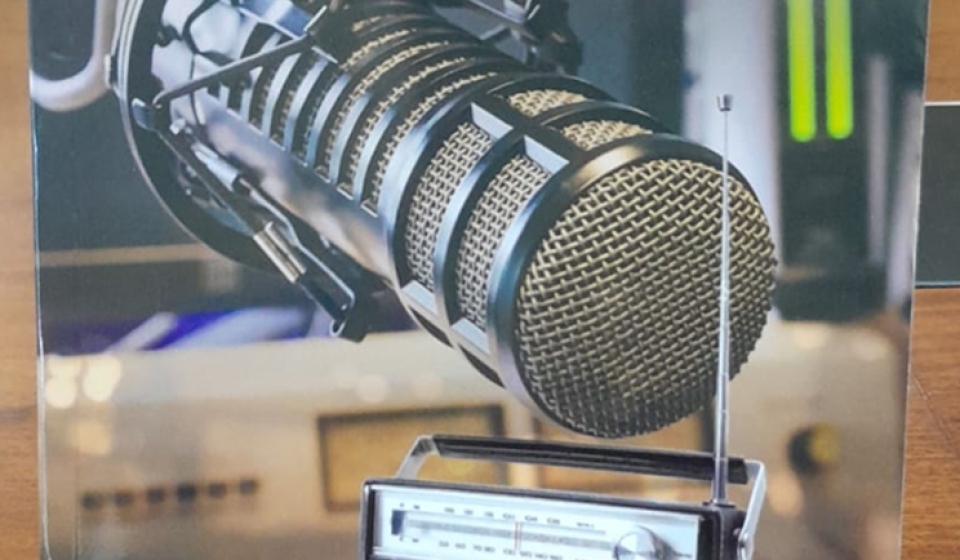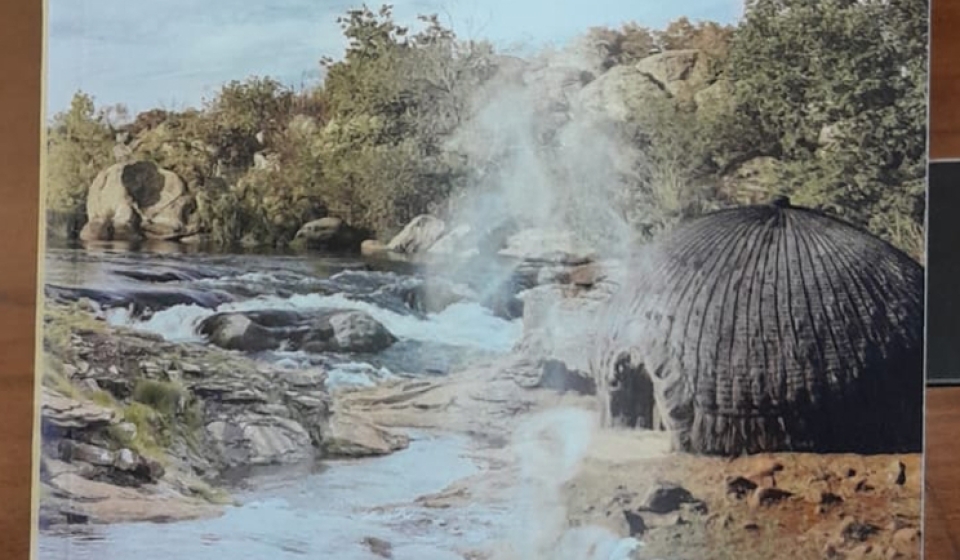‘UMSAMO’
An African Universal Wisdom, Spirit and Knowledge
Defining Umsamo
‘Umsamo’ is an Nguni term meaning a place in an Nguni hut where it is intrinsically believed that the ancestral spirits Ithongo or Amadlozi or Abaphansi or Izinyanya are seated. These words in our African settings are used interchangeably. In English these are called Ancestors or ancestral spirits. Therefore the word ‘Umsamo’ is institution of Amadlozi/amathongo which is ancestors collectively.
Because Amathongo/amadlozi are just the same people who lived with us on earth, it is always believed that they, the gods, and all the cosmic forces must serve the interests of the living for their own peace and fulfillment. That is the reason why they are cared for, looked after and highly feared and respected.
One might say ‘umsamo’ is an African Metaphysics, if wanting to give it a philosophical explanation. Also one may look at ‘Umsamo’ at both Epistemological and Ontological level. Such approaches will take ‘umsamo’ at a status of becoming a universal philosophy. ‘Umsamo’ is all universal wisdom that is there (Idwala laphakade).
Umsamo as a Philosophical Concept and its Epistemology
‘Umsamo’ is a cosmological, epistemological and ontological universal centre of African wisdom, metaphysics and natural Law of UBUNTU as it originated from NTU in ancient Egypt. In ancient Egypt, the Egyptian mystery schools, which produced Bona abakhulu BaseKhem organisation, was the essence of ‘Umsamo.’
‘Umsamo’ is the godly light; it is the godly law; it is the godly knowledge; it is the godly power that enables one to see beyond horizons. To be able to see beyond horizons means that one is now endowed with heavenly light and power to foresee and foretell. That power comes from God, Whom we AbeNguni call UMvelingqangi. Our ancestors are God’s angels.
In ancient Egypt, Thoth Hermes was the father of ‘Umsamo’, for all knowledge that came from God was first transmitted to him, and then he would disseminate it to the entire world. The ancient Egyptian Mystery Schools, by law, had to use most of Hermes’ divine books. All ancient Egyptian learning centres had to use one of Hermes’ books, for he was the only source of ‘Umsamo’.
To be a proper African Uhlanya you must go through a thorough process of what ‘Umsamo’ is, and how it functions. Unlike now, it used to be a very lengthy process that would take a couple of years.
Therefore, ‘Umsamo,’ by origin, is an African phenomenon, and we have seen so many white shamans coming to Africa for training as African Uhlanya, and we haven’t seen or heard any African going to Europe to be trained as African Uhlanya.
Therefore, epistemology is crucial and fundamental because it helps us to know how we think. Without some means of understanding how we acquire knowledge, how we rely upon our senses, and how we develop concepts in our minds, we have no coherent path for our thinking.
A sound epistemology is necessary for the existence of sound thinking and reasoning — this is why so much philosophical literature can involve seemingly arcane discussions about the nature of knowledge.
Because of its origin, ‘Umsamo’ is ontologically and cosmologically embedded in an African culture, which produces an African world view. As a universal law, ‘Umsamo’ is the law that is always in operation.
We are able to see now, with eyes made clear by knowledge, that everything is governed by universal law; that the infinite number of laws are but manifestations of the zone great law; the Law that is THE ALL. It is true indeed that not a sparrow drops unnoticed by the Mind of THE ALL – that even the hairs on our head are numbered – as the scriptures have said: There is nothing outside of Law; nothing that happens is contrary to it. That is ‘Umsamo.’
Jay Weidner cautions us that we must return to the beliefs and practices of the ancient Egypt. They believed that the formation of the kA is deeply connected to the shaping, experience and remnants of the physical form. The kA includes all of the genetic material and characteristics of our parents and ancestors. The Egyptians knew that residue from all of one’s ancestors were sharing in the make-up of one’s own personal kA. So reverence for one’s ancestors, and remembering their names, was considered essential to their practices. They believed that our ancestors’ kA lives on in all of us. Their genes, successfully passed down through the many generations, live on in each being born of their creation. All of our ancestors are gazing through our eyes at this very moment. The ancients believed that by just saying their names we can call them forth, with all of their wisdom and knowledge. This is ‘Umsamo.’
Thoth Hermes of ancient Egypt – a god, had this to say in his Corpus Hemerticum, which served as a start of everything on Earth and in Heaven. All the ancient Egyptian wisdom emanated from Hermes, and all his books were used in ancient Egyptian Mystery Schools. Therefore, he once said: “It is true, without falsehood, certain and very real: That which is on high is as that which is below; in order that the miracle of Unity may be very perpetual” (Thoth-Hermes, Emerald Table, 10,490 BC).
What he meant here was that Heaven and Earth are equal, because if they are not equal, there will be no equilibrium; there will be no perpetual unity between the two spheres of life. In this context, ancestors are just like us; except that they would a more advanced and enlightened life than us.
But on other levels we are equal because there are things they would not or achieve without us, and there things we cannot achieved without them. This condition was created purposely by God so that “the miracle of unity may be perpetual”.
The living lives in a physical world and the ancestors live in a spiritual world. This is the difference between us and our Amadlozi/amathongo.
In ancient Egyptian mythology and belief, the material world and the cosmic or spiritual world were intertwined, if not consubstantial. The universe was composed of one nature, of which all things – people, creatures, gods, even ideas – were created. Actions and rituals practiced on earth had an effect on the celestial world and vice versa.
The ancient Egyptians saw in nature the cosmos. The rejuvenation of the Nile floods and the rising and falling of the sun were representative of the balance and order of their universe. When the Sumerians first observed the destruction that the Tigris and Euphrates could potentially bring, and the ferocity of the storm, they came to understand that the cosmological order was driven by powerful forces that were potentially conflictual and even anarchical. The people of this region knew the cosmos to be a collection of powers or divine wills that could easily dictate their lives and livelihoods.
Therefore, at the spiritual level ‘Umsamo’ is a symbol for the integration of self and soul. In dreams ‘Umsamo’ can stand for the death, but it also contains rebirth. It symbolizes the harmonious union of the human with the ‘higher self-‘ (God).
On a metaphysical level, ‘Umsamo’ is a place of great spiritual significance. Within man, there are two aspects. There is his real inner and divine self. There is also the body and intellect which, at his present stage of evolution, consider himself to be a separate egoist entity. However, there comes a time when man realises that he is not the body and intellect.
His real existence is a state of being; a consciousness at one with the Universal consciousness.
AbeNguni believe that a man must aspire to a spiritual state that shall reunite him ultimately with his Ancestors. To do so he must fulfill all the physical functions relevant to his physical being. Through this act of achievement, he can eventually experience a higher spiritual life in the ancestral world. Thus the good qualities attained in the physical world are carried over into the spiritual world. The Zulus (and the AbeNguni) consider the spiritual part of life as an integral part of the physical aspect and not separated from it. The ancestors through living a heightened existence are still the same people they were on earth.
The living dead are understood as having some form of heightened existence. The ancestors, though living a heightened existence, are still the same people they were on earth. There is here an emphasis on the continuity of life after death. Paradise, according African thought, is not somewhere in the sky, it is in the underworld of the ancestors – kwabaphansi. Man must aspire to a spiritual state that shall re-unite him ultimately with his ancestors. Hence, land is not simply regarded as a piece of real estate; it is has a very deep religious significance. Land is perceived as an organism that sustains the bond between the unborn, the living and the dead. What it means is that man must embrace and practice Ubuntu if he/she hopes to get reunited with his ancestors. No one, particularly in an African belief and setting, can hope to have mercy and luck from his ancestors if he commits evil and inhumane deeds.
Umsamo as a Universal Spirit
The Ithongo (the universal spirit) is ALL that ever was, is, or ever shall be, conceivable or inconceivable. The Ithongo is all things, all things are of IT; but the sum of all things is not the Ithongo. The Ithongo is ALL the wisdom there is, all wisdom is of IT; but all wisdom conceivable is not the Ithongo. ALL substance, ALL power, ALL wisdom is of IT and IT is in them and manifest through them, but IT is also above them and beyond them, eternally un-manifest.
Man who is of the Ithongo can never know the Ithongo while he is an ordinary Man. All he can know of IT are certain manifestations which come within the range of his perceptions.
The pupil is generally taught that the manifestations are three in number. Namely:
1. Universal Mind,
2. Universal Force,
3. Universal Substance or Matter.
In the beginning of a Cosmic Cycle the Ithongo first manifested in all the many grades of mind, downward into all the grades of Matter. But at first both Mind and Matter were un-individualized. When, how, or why, only the Ithongo can know. Individuality began in the highest planes of Mind — those planes which touch on pure Spirit.
Understanding of what occurred is best gained by the following conception. Think of the Cosmos, just before Individuality began, as a vast, amorphous ocean of Mind and Matter, its surface ripples and upper reaches, those planes of Mind which touch on Spirit; growing denser and denser, downward till Matter, in Etheric form, is reached; downward till Ether becomes Gas, which may be likened to the mineral-charged lower strata of the ocean; downward till gases become liquids (muddy water); finally into solids (thick mud)
The Cosmic Ocean & Cosmic Cycle
The beginning of Individuality in this Cosmic Ocean may be likened to the starting of myriads of tiny “whirlpools” among the ripples of the surface (the Spiritualized Mind). These “whirlpools” under the force of a growing flood-tide, extended deeper and deeper, till at last all strata were involved in the swirl. Thus we have Individuality set up, extending from Spiritual Mind to the Physical Plane. The “whirlpool” on the surface represents the birth of the Soul.
Its extension to the muddy depths represents the Soul’s descent into matter. In matter the Soul has reached the aphelion of its cycle, and now it begins its long, slow return journey.
By the process of evolution it climbs slowly upward, from mineral to plant, from plant to animal, from animal to man; through all grades and states of human development, shaking off, slowly and painfully as it climbs, the gross accretions gathered during its descent; up through the lower mind to the higher, it climbs, till at last, its cycle complete, it merges with its source, the Ithongo, and ceases to be Individual, being one with the ALL.
Man is an individual having in him, as has everything on the physical plane, all the attributes of the Cosmic Ocean of which he is an individualized portion. He has reached on his upward journey the stage of personal consciousness. We speak of Man in general. There are undeveloped men, whose personal consciousness is but rudimentary as there are others who have transcended personality and know their real Selves — that immortal portion first individualized from the lofty planes of the Spiritual Mind.
Man is on a journey, the goal of which is union with the source of his being – the Ithongo. To reach that goal he must first pass through all experience the Cosmos affords, and must shake off all accretions accumulated on his descent from individualized Spiritual Mind into grossest Matter.
To do this, he is born and born again, for his physical body dies, as do his lower mental principles; only his higher mental principles which are akin with the Ithongo survive from age to age, retaining throughout the Cosmic Cycle the individuality bestowed upon them at its opening.
Principles of Man
- 1. The Physical Body (Umzimba).
This is the normal appearance of a man as a person.
2. The Etheric Body (Isithunzi).
This is merely the etheric counterpart of the physical body and not really a separate principle, normally. But in certain abnormal states it is partially separable from the physical body. It is the medium through which the Lower Mind (or Force) functions.
3. Lower Mind (Amandhla).
That portion of the Mind which shows as Life-force and other forms of what we call Energy.
4. The Animal Mind (Uthiwesilo).
The planes of Mind which manifest as passion, emotions and instincts.
5. Human Mind (Ubuthi bomuntu).
The planes of Mind which manifest as human consciousness, intellect, higher emotions, etc.
6. Spiritual Mind (Ubuthi bethongo).
The higher planes manifesting Spiritual consciousness.
7. Ithongo. (Amadlozi > ancestoral spirit)
The Ray, or spark of Universal Spirit which informs all lower manifestations.
Brotherhood of the Higher Ones of Egypt (Bonaabakhulu BaseKhem).
As pointed above, the Brotherhood of the Higher Ones of Egypt organization was founded in Egypt during the reign of the Pharaoh Cheops or Kufu. Its founder being a Priest of Isis. It has as its objects the spreading of the Wisdom which comes from of Old among all races and tribes in Africa, and the study and practice by its members of that Science which depends on the power of Thought. Coincidentally the AbeNguni were also ruled by Pharaoh Kufu before they migrated to other parts of the world, particularly in Southern Africa. This is well presented in the book: AmaZulu: Ancient Egyptian Origin (2015) by the author. Understanding the dynamics of this organization is crucially important because it provides a window of beginning to know what was really happening in ancient Egypt, and how important for Africans to connect with Egypt.
These are the grades of the Brotherhood and some of the powers and functions they exercise are as follows:
1. The Pupil (Ithwasa)
The Pupil is one under probation which lasts from one to three hundred years. During this time he is under instruction by a Master and subjects himself to certain disciplines. If found worthy he enters the brotherhood as a Disciple, at the end of his period of probation. If unworthy he is dismissed back to the world.
2. The Disciple.
The Disciple is an avowed member of the Brotherhood and subject to its disciplines. Under instruction he develops certain powers. “Mesmerism” is usually one of the earliest to develop.
3. The Brother.
A full member of the Order with many developed powers, of which it is the only power of communication by Thought with those of equal or higher development, and what European Occultists term Astral Consciousness.
4. The Elder.
An advanced Brother.
5. The Master.
The Teacher of all lower grades. The Master has many developed powers (Clairvoyance and Clairaudience on the Etheric Planes among many others). Mastership can be attained only by one who in a past life has reached Elder brotherhood.
Of these it is not permitted to speak save to say that they have attained Consciousness on the plane of the Real Self. Only one who has reached Mastership in a previous life can gain
Traditional African Religion
Traditional African religion is part of ‘Umsamo’. It is vital, basic, mysterious, and magical, and at the same time it knows how to exist and co-exist. It knows how to survive in the midst of religious adversity. Before the arrival of the missionaries the African society embraced its own system of morality, view of man and world-view as reflected in the culture’s code of behaviour and framework of moral evaluation.
By contrast the missionary activists introduced into Africa a framework of thinking and scale of values, which reflected an ethos and milieu distinctive to the spirit and experience of the West.
This is the religion (traditional African religion) that St Augustine referred to when he wrote: ‘That which is called the Christian religion existed amongst the ancients and never did not exist, from the beginning of the human race until Christ came in the flesh, at which time the true religion, which already existed, began to be called Christianity’
There are records to prove that there was one institution in the ancient world, which was universal, and whose method of instruction, and content of its theology, was expressed by symbol and myth. This is the institution of the Ancient Mysteries, which was found in all parts of the world. All religious cults have their roots in the ancient Mysteries whose origin and foundations are traced to the teachings and doctrines of Hermes Trismegistos – who was an African Ethiopian sage.
Umsamo as a Transformative and Decolonial Philosophical Concept
Unless otherwise argued, ‘Umsamo’ is a transformative decolonial concept. At a time of African Renaissance a concept of ‘Umsamo’ teaches us – Africans – who we are in essence.
What is decoloniality?
Decoloniality ‘struggles to bring into intervening existence an-other interpretation that brings forward, on the one hand, a silenced view of the event and, on the other, shows the limits of imperial ideology disguised as the true (total) interpretation of the events’ in the making of the modern world. Decoloniality is distinguished from an imperial version of history through its push for shifting of geography of reason from the West as the epistemic locale from which the ‘world is described, conceptualized and ranked’ to the ex-colonized epistemic sites as legitimate points of departure in describing the construction of the modern world order.
This is an alternative epistemology seeking to question the current Euro-American hegemonic epistemology founded on the tyranny of abstract universals (singular knowledge/one universal truth) and recover de-centred and suppressed knowledge from the Global South in general and Africa in particular. It also implies reading and interpreting the empire and the world from the margins and borders between hegemonic and dominant forms of knowledge. It is a subaltern epistemology in and of the Global South focused on unpacking how European modernity overshadowed other modernities, silences other knowledges and re-shaped the non-Western world into its present condition of mimicry and weakness.
The reality is that Africa is still ensnared, entrapped, and woven within invisible colonial matrices of power.
Africa is the last continent to ‘decolonize’—beginning in the 1960s. The southern African region is the last part of Africa to achieve ‘political independence, ’with Angola and Mozambique in 1975, Zimbabwe in 1980, and Namibia in 1990. South Africa is the last sub-Saharan African state to achieve ‘freedom’ and ‘democracy’ from the yoke of colonialism in 1994. Taken together, these historical realities indicate that colonialism is part of African’s recent past and current reality. It is not yet a ‘legacy.’
Colonialism is a vast and multi-faceted world historical process involving colonization of consciousness, sexual and gendered colonization, colonization of nature and space, colonization of aesthetics, colonization of language, colonization of culture, colonization of economies, colonization of memories, colonization of institutions, colonization of epistemology, and colonization of imagination, among many forms of colonialism. Such a vast and multi-faceted world historical process requires an equally vast and multi-faceted decolonization project that addresses these multiple and multi-layered range and forms of oppressions, before ‘ex-colonized’ people could be fully liberated and enjoy freedom.
The project of decolonization must not be restricted to achievement of ‘juridical freedom’ because such freedom cannot be enjoyed without addressing mental, economic, cultural, institutional, sexual, gender, aesthetic, and epistemological oppressions.
There is need for knowledge and power decolonization; ideological decolonization, linguistic decolonization, aesthetic decolonization, consciousness decolonization, gender and sexual decolonization, and many other invisible and visible forms that include what Ngugi wa Thiong’o terms ‘de-whitinisation.’
Our overarching theoretical and conceptual framework is a decolonial epistemic perspective that involves thinking from Africa and the Global South; taking full account of voices of the African subaltern groups; and thinking with and talking with rather than talking about and for the subaltern—collaborating with them in the process of becoming human. ‘Umsamo’ insists on being human.
Endogenous?and indigenous knowledges have been pushed to the margins of society. Africa is today saddled with irrelevant knowledge that disempowers rather than empowers individuals and communities.
Churches and universities in Africa are sites for reproduction of coloniality. We so far do not have African universities. We have universities in Africa. They continue to poison African minds with research methodologies and inculcate knowledges of equilibrium. These are knowledges that do not question methodologies as well as the present asymmetrical world order.
In decoloniality research methods and research methodologies are never accepted as neutral but are unmasked as technologies of subjectivation if not surveillance tools that prevent the emergence of another-thinking, another-logic and another-world view. Research methodologies are tools of gate-keeping.
What is even more disturbing is that African children and youth begin a journey of alienation from their African of this perspective is the role played by philosophers like Rene Descartes and the long term implications of his motto ‘Cogito ergo sum‘ (I think, therefore, I am) on conceptions of subjectivity. What is at issue here is the pertinent question of how whiteness gained ontological density far above blackness as well as how the notions of ‘I think, therefore I am’ mutated into ‘I conquer, therefore, I am’ and its production of ‘colonizer and colonized’ articulation of subjectivity and being. Coloniality of being is very important because it assists in investigating how African humanity was questioned as well as processes that contributed towards ‘objectification’/’thingification’/‘commodification’ of Africans. One of the continuing struggles in Africa is focused on resisting objectification.
These three concepts enable a deeper understanding of the construction of current modern world that is today besieged by a plethora of crises.
The current global crisis emanates from the reality of modernity which created ‘modern problems for which there are no modern solutions. The crisis of Western civilization was noticed long ago by one of the early decolonial thinkers, Aime Cesaire, who in his Discourse on Colonialism proclaimed that:
A civilization that proves incapable of solving the problems it creates is a decadent civilization. A civilization that chooses to close its eyes to its most crucial problems is a stricken civilization. A civilization that uses its principles of trickery and deceit is a dying civilization.
From the time of Cesaire’s indictment, European civilization has suffered a series of trials and questioning, beginning with decolonial struggles that were premised on rejecting colonialism as a medium of modernity and civilization. The modern problems ranged widely from those of ecological destruction, climate change, global migration that is provoking new racism and xenophobia, right up to increasing inequalities, deepening poverty and the crisis of Euro-American hegemonic epistemologies.
To fully appreciate the gravity of the current multi-dimensional crisis, we must remember the promises of Euro-American modernity to humanity. In the first place, is the fact that historically modernity promised civilization that was founded on the Cartesian notion of ‘I think, therefore, sum’ to privilege ‘men’ in masculine gender terms, as the fountain of all knowledge about the world.
Western thinking operated as ‘abyssal thinking’ consisting of ‘a system of visible and invisible distinctions, the visible ones being the foundation of the invisible ones. Those people like Africans and others who experienced colonization: their realm was re-constituted by technologies of power and colonial matrices of power into an incomprehensible state of being. The possibility of co-presence or peaceful co-existence of those in the zone of being with those in the zone of non-being was rendered impossible. The end product of all this were colonial discourses and negative representations of black people as being characterized by a catalogue of deficits and series of lacks, to present the trajectory of those closed out of the ‘Zone of Being’ as unfolding in this way:
We went from the sixteenth century characterization of ‘people without writing’ to the eighteenth and nineteenth century characterization of ‘people without history,’ to the twentieth century characterization of ‘people without development’ and more recently, to the early twenty first century of ‘people without democracy.
During the same period, those in the ‘Zone of Being’ were systematically gaining more and more fruits of modernity from sixteenth century ‘rights of people,’ to eighteenth century ‘rights of man,’ and to the late twentieth century ‘human rights.’ What was happening is that the Anglo-Saxons and their descendants were increasingly consolidating their ontological density while Africans and those of African descent resident in the Diaspora were losing ontological weight.
Decoloniality arises from this context in which the humanity of black people is doubted and emerges as one way of telling the story of the modern world from the experiences of slavery, imperialism, and colonialism. It is not the only way of articulating the history of the construction of the modern world.
What distinguishes it is its starting point, which is coloniality. Decoloniality entails studying Africa as a product of 350 years of struggles against slavery in the first instance and against coloniality today.
To fully understand and appreciate decoloniality as a liberatory option, it is important to clearly distinguish it from colonialism, decolonisation, and coloniality.
Therefore, the concept of ‘Umsamo’ is as good as decolonial institution in its philosophical, metaphysical and liberatory nature. Perhaps, re-embracing our ancient Egyptian value systems would help to usher in a real African Renaissance that would make us pure and authentic Africans.

